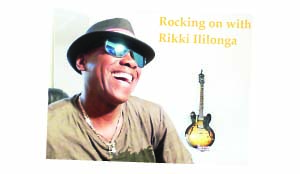 YOU can’t talk of Zamrock without analysing what birthed the music genre just as you can’t talk of Blues, Reggae or Spirituals without discussing slavery.
YOU can’t talk of Zamrock without analysing what birthed the music genre just as you can’t talk of Blues, Reggae or Spirituals without discussing slavery.
Well, to many young Zambian musicians and music lovers, Zamrock is probably a word they have never heard despite the fact that it is a genre that nearly defined the country’s sound internationally.
Coined by my long-time good friend, TV and radio personality Dr Manasseh Phiri, Zamrock consciously or unconsciously blended Rock sound with native beats coming with a bewitching hybrid sound.
The Zamrock frenzy was largely initiated by the visit of Osibisa, a UK-based afro-rock band that fused Rock and African rhythms.
Rock, which was more entrenched among Zambian bands, was itself birthed after the biggest music event that took place from August 15-18 in 1969 in America – the Woodstock musical festival.
The musical event saw 500,000 young people who were disenchanted with the rigid social order of the day meet on Max Yasgur’s 600-acre dairy farm in Bethel, New York, to listen to the best rock ‘n roll of the time.
There were lots of drugs, lots of sex and nudity, not to talk of mud. The Woodstock Music Festival became an icon of the 60’s hippie counterculture and had affected the youths globally.
Bands that performed at the event like Jimi Hendrix, Joe Cocker, The Who, Credence Clearwater Revival, Canned Heat, Santana, The Greatful Dead, Sly And the Family Stone, Jefferson Airplane, Richie Haven, Ravi Shankar, The Band, Ten Years After and Crosby, Stills, Nash and Young became household names among Zambian youths.
The influence was evident in appearance of the youths in Zambia who favoured growing long hair, wearing flower power shirts, listening to Rock music and flashing the ‘V’ Peace sign symbolising the 60’s anti-Vietnam slogan of ‘make love, not war’.
Thus were born bands like The Witch (acronyms for We Intend To Cause Havoc’, The Peace, Tinkles, Aqualung, Five Revolution, Earthquakes, Oscillations and Crossbones.
The mini music renaissance in Zambia later saw local artistes evolve from poor mimicry of European rock bands by fusing foreign sounds characterised by heavy, bluesy and psychedelic rhythms with native ones birthing Zamrock.
Musically, Rock music was largely incorporated in the repertoires of local bands who imitated European bands of the day.
However, it was the Zamrock era-the most productive period in the history of Zambian music-that made the foremost band to ever come from Zambia, Mosi Oa Tunya, take Kenya by storm when most Zambian bands only commanded a local following.
Now Zamrock has been rediscovered internationally and repacked in albums like Dark Sunrise -comprising songs by Mosi Oa Tunya, my material, music by the Witch and Amanaz.
Other bands that have been resurrected by Now Again include giants of the Zamrock scene like Paul Ngozi and Chrissy Zebby Tembo, who are post-humously being exposed to the international market.
Not only has Zamrock been rediscovered, tremendous effort is being made to expose surviving artists like Emmanuel Kangwa ‘Jagari’ Chanda and myself for us to perform internationally.
Recently, Now-Again, the record company that rediscovered Zamrock in conjunction with Urban Outfitters, presented what was dubbed Zamrock Live! in Los Angeles featuring Jagari Chanda, who performed his band’s world-psych-rock classics in America for the first time.
How I wish the departed musicians from the Zamrock era were alive since I know they would be surprised that despite not being honoured back home, companies like Now-Again are championing the 70s rock scene they originated.
With growing interest in the recorded output of 1970s Zambia, Jagari Chanda and myself put up a show in Germany in December 2012.
We also teamed up with Germany’s Karl Hector & The Malcouns to perform at the Trans Musicales Festival in France appearing under the super-group moniker Zam Rock.
Jagari and I made a follow-up French festival appearance at Espace Fraternité (Magic Mirrors) in March 2013.
Our initial Lusaka rehearsal in November 2012 has also led to a superb short film entitled This is“Zamrock!!” (a 2014 documentary feature)
However, we cannot celebrate the Zamrock era without honouring one of the most accomplished music promoters the late Edward Khuzwayo, in whose hands many Zamrock artists passed through.
Almost all Zamrock musicians of note like myself, Keith Mlevhu, Paul Ngozi, Amanaz, Five Revolutions, The Great Witch, Tinkles, The Peace and The Blackfoot were shaped by Khuzwayo whose love for Zambian music culminated in the establishment of the Zambia Music Parlour (ZMP).
The music company’s domain had flourishing outlets on Lusaka’s Nkwazi Road, Buteko Avenue in Ndola, which was presumably the head office, and Kitwe’s Matuka Avenue.
Here, Zambians would buy the latest Zamrock albums and usually kept abreast with the latest releases of their stars unlike now when we have one week bubblegum hit wonders.
Khuzwayo was to Zambian music what Berry Gordy Jr, the black American record producer and founder of the legendary Motown record label, was to black American music.
The other legendary promoter and producer of Zamrock is Peter Musungilo of DB studios in Lusaka.
As the international community discover Zamrock, let us implore our local deejays, who are deafening our ears with noise passing as music, to honour the great artists of yesteryears, who strove to improve Zambian music.






